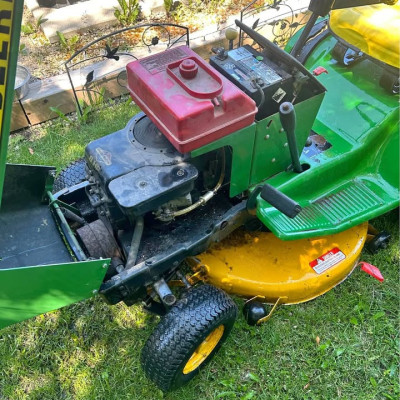Chinese-Style Arrabiata Pasta (Two Ways)
Italian cuisine is beloved worldwide, and one of its stars is undoubtedly the rich and spicy Arrabiata sauce. Traditionally, this dish, which means "angry" in Italian, features a fiery tomato-based sauce flavored with garlic, olive oil, and red chili peppers. While delicious in its classic form, the concept of fusion cooking offers exciting possibilities for blending culinary traditions. One such innovation is Chinese-style Arrabiata pasta—a marriage of Italian and Chinese flavors that creates a unique and mouthwatering dish. In this article, we will explore two distinct approaches to preparing Chinese-style Arrabiata pasta: a classic noodle dish with a spicy Sichuan twist and a stir-fried version with bold umami flavors.
The Fusion of Italian and Chinese Cuisines
Before diving into the recipes, it’s essential to understand why these two cuisines work so well together. Italian and Chinese cuisines, though distinct, share a deep appreciation for fresh ingredients, bold flavors, and simple cooking techniques that allow those ingredients to shine. Both cultures also emphasize the importance of balance in their dishes—whether it’s balancing acidity with sweetness in Italian cooking or harmonizing sour, spicy, sweet, and salty flavors in Chinese cuisine.
The fusion of these two culinary traditions allows for a creative exploration of flavors. The spicy, garlicky heat of Arrabiata sauce can be complemented by the boldness of Sichuan peppercorns or the savory depth of soy sauce and hoisin. Meanwhile, pasta, a staple of Italian cuisine, can be swapped with Chinese noodles or combined with ingredients like tofu, bok choy, and scallions for a new twist.
Recipe 1: Sichuan-Style Arrabiata Pasta
The first version of Chinese-style Arrabiata pasta is a nod to the Sichuan province, known for its fiery and aromatic cuisine. This recipe incorporates traditional Arrabiata sauce with the distinctive numbing heat of Sichuan peppercorns and the savory richness of soy sauce.
Ingredients:
Pasta: 400g of penne or spaghetti
Tomatoes: 4 large ripe tomatoes or a 400g can of crushed tomatoes
Garlic: 4 cloves, minced
Red chili flakes: 2 teaspoons (adjust to taste)
Sichuan peppercorns: 1 teaspoon, toasted and ground
Soy sauce: 2 tablespoons
Rice vinegar: 1 tablespoon
Sugar: 1 teaspoon
Ginger: 1-inch piece, grated
Spring onions: 2, finely chopped
Cilantro: A handful, chopped
Olive oil: 2 tablespoons
Salt: To taste
Black pepper: To taste
Instructions:
Cook the Pasta: Bring a large pot of salted water to a boil. Add the pasta and cook according to the package instructions until al dente. Drain and set aside, reserving a cup of pasta water.
Prepare the Sauce: In a large pan, heat the olive oil over medium heat. Add the minced garlic and grated ginger, sautéing until fragrant. Add the red chili flakes and ground Sichuan peppercorns, stirring for about a minute to release their aromas.
Add the Tomatoes: Pour in the crushed tomatoes (or chopped fresh tomatoes) and stir well. Add the soy sauce, rice vinegar, and sugar, then season with salt and black pepper. Let the sauce simmer for about 10-15 minutes, stirring occasionally, until it thickens.
Combine Pasta and Sauce: Add the cooked pasta to the sauce, tossing to coat evenly. If the sauce is too thick, add a little of the reserved pasta water to achieve the desired consistency.
Garnish and Serve: Stir in the chopped spring onions and cilantro. Serve hot, garnished with extra chili flakes if desired.
Recipe 2: Stir-Fried Arrabiata Noodles with Tofu
The second approach to Chinese-style Arrabiata pasta is a stir-fried noodle dish. This recipe combines the flavors of Arrabiata sauce with stir-frying techniques, incorporating tofu and vegetables for a hearty, satisfying meal.
Ingredients:
Chinese wheat noodles or spaghetti: 400g
Firm tofu: 200g, cubed
Garlic: 4 cloves, minced
Red chili flakes: 2 teaspoons (adjust to taste)
Tomato paste: 3 tablespoons
Soy sauce: 2 tablespoons
Hoisin sauce: 1 tablespoon
Oyster sauce: 1 tablespoon (optional)
Sugar: 1 teaspoon
Bok choy: 2 small heads, chopped
Carrot: 1, julienned
Bell pepper: 1, sliced
Spring onions: 2, chopped
Sesame oil: 2 tablespoons
Peanut or vegetable oil: 2 tablespoons
Salt: To taste
Black pepper: To taste
Instructions:
Prepare the Noodles: Cook the noodles or spaghetti according to the package instructions. Drain and rinse under cold water to stop the cooking process. Set aside.
Stir-Fry the Tofu: In a large wok or pan, heat the peanut or vegetable oil over medium-high heat. Add the cubed tofu and stir-fry until golden brown on all sides. Remove the tofu from the pan and set it aside.
Make the Sauce: In the same pan, add the minced garlic and red chili flakes, stirring until fragrant. Add the tomato paste, soy sauce, hoisin sauce, oyster sauce (if using), and sugar. Stir well and let the sauce cook for about 2 minutes.
Add the Vegetables: Add the bok choy, carrot, and bell pepper to the pan. Stir-fry for 3-4 minutes, until the vegetables are tender but still crisp.
Combine Everything: Return the tofu to the pan and add the cooked noodles. Toss everything together, ensuring the noodles are evenly coated with the sauce and the vegetables and tofu are well distributed.
Finish with Sesame Oil: Drizzle the sesame oil over the noodles and give everything a final toss.
Serve: Garnish with chopped spring onions and serve hot.
Tips for Success
Balance the Heat: Both versions of this dish can be adjusted to your preferred spice level. Add more or fewer chili flakes depending on your tolerance for heat. The Sichuan peppercorns add a numbing sensation rather than outright heat, so consider this when adjusting your spices.
Use Fresh Ingredients: Fresh tomatoes and high-quality olive oil can make a significant difference in the flavor of your sauce. Likewise, using fresh garlic, ginger, and vegetables will enhance the dish’s overall taste.
Texture Matters: In the stir-fried version, make sure your tofu is firm and well-pressed to prevent it from falling apart during cooking. Stir-frying the vegetables just until tender-crisp ensures they retain a pleasant texture and don’t become soggy.
Don’t Overcook the Noodles: Whether you’re using pasta or Chinese wheat noodles, it’s essential not to overcook them. Al dente noodles hold up better when tossed in the sauce and contribute to a more satisfying bite.
Conclusion
Chinese-style Arrabiata pasta is an excellent example of how fusion cuisine can create something entirely new and exciting. Whether you opt for the Sichuan-inspired version with its bold, numbing spices or the stir-fried noodles with a savory umami punch, these dishes offer a unique twist on the classic Italian favorite. The versatility of these recipes allows for endless experimentation, so don’t be afraid to try different vegetables, proteins, or even other types of noodles. Enjoy the best of both culinary worlds with these two delectable dishes.






